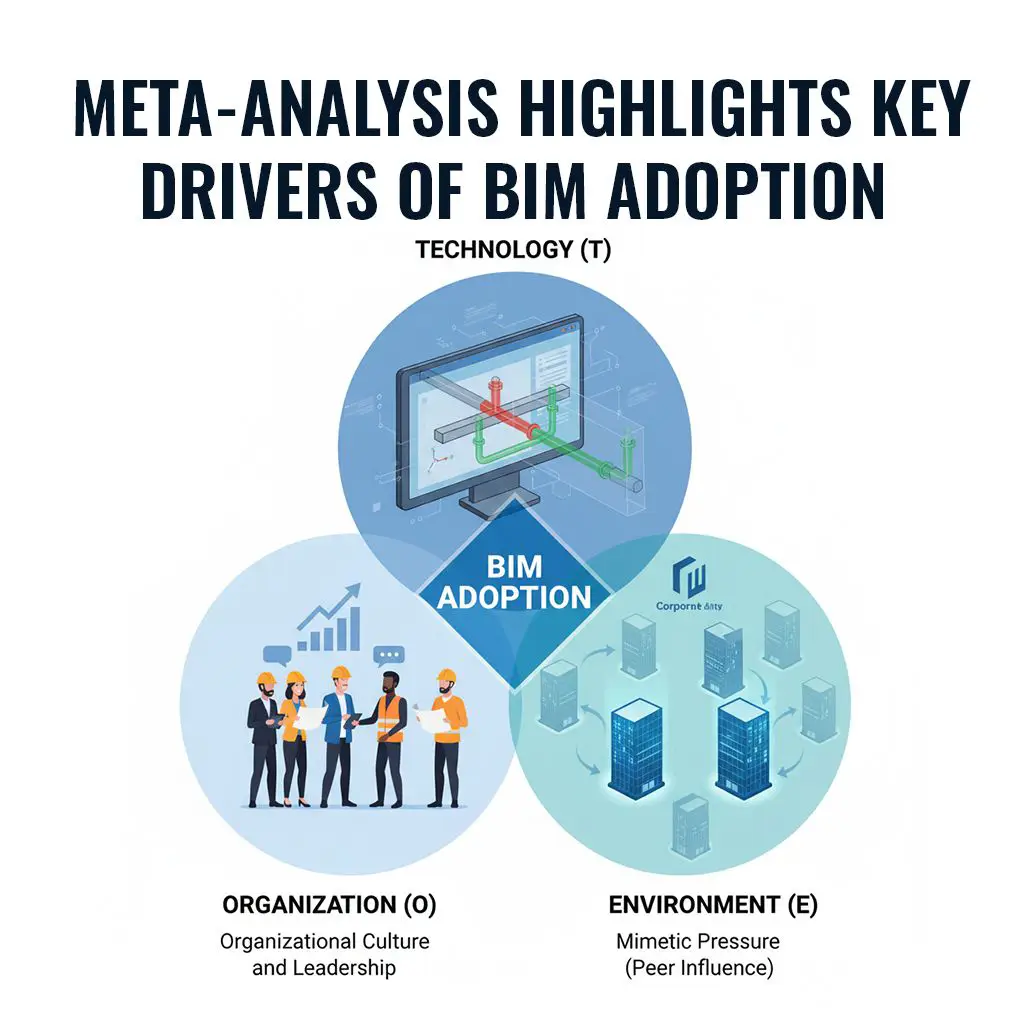Download Ready
Thanks for your interest! Your syllabus is now ready to download.

September 16 2025
2 Min Read
A new academic study has shed light on what truly drives the adoption of Building Information Modeling (BIM) across global projects. Published in September 2025, the research analyzed 62 empirical studies conducted between 2012 and 2023, making it one of the most comprehensive reviews of BIM adoption to date.
The study applied the TOE (Technology–Organization–Environment) framework, a well-established model used to analyze innovation adoption. By categorizing findings into these three dimensions, the researchers identified which factors have the strongest influence on BIM uptake in practice.
These findings offer practical insights for firms planning BIM adoption. Rather than focusing solely on software investments, organizations must address cultural readiness and ensure alignment with industry practices. Training, leadership buy-in, and communication are as vital as technical compatibility.
The environmental factor also highlights the importance of government policies and mandates, which often accelerate adoption. In countries where public sector projects require BIM compliance, industry-wide uptake has been faster and more consistent.
For AEC professionals, the study confirms that BIM adoption is not just about technology — it’s about people, processes, and external pressures. The research suggests that firms that invest in culture, training, and interoperability will see greater returns on their BIM initiatives.
As BIM continues to expand globally, understanding the true drivers behind adoption is essential. This meta-analysis provides evidence-based guidance, ensuring that firms can strategically approach BIM implementation and maximize its benefits in efficiency, cost savings, and collaboration.